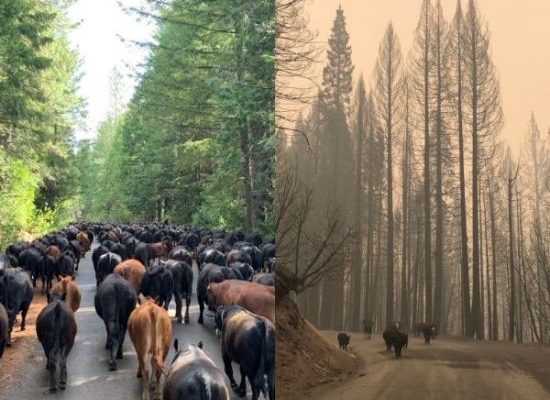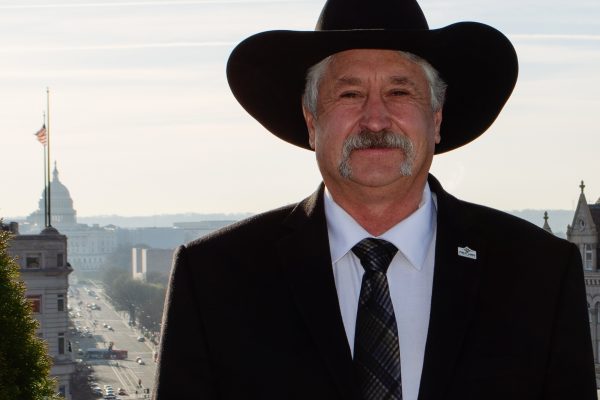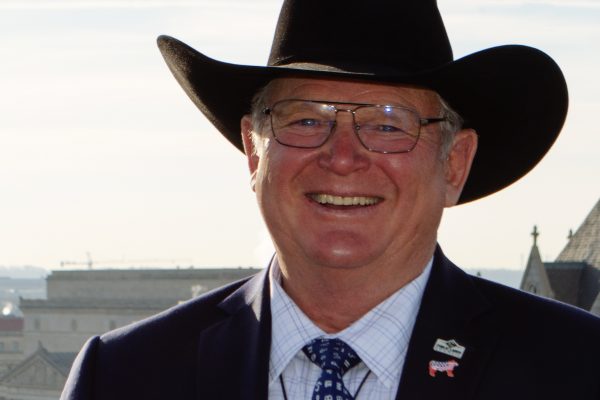By Theodora Dowling
Special to Western Livestock Journal, November 11, 2014
“Tell your story!” Ranchers get this message drilled into them on a regular basis. It stems from the basic truth that public opinion influences public policy, and those laws and regulations—especially on public lands—can make or break a ranching family. The thing is, ranchers are pretty busy going about the business of being ranchers: caring for the land and feeding and doctoring livestock, horses and kids. They’re not communicators by trade. Besides, “the public” is comprised of a wide range of audiences with a wide range of understanding of where their food comes from. How are ranchers to know whom to talk to in order to influence policy? How to get the word out? What exactly “the public” needs to hear in order to become sympathetic?
“There are professionals who get paid to figure that kind of stuff out, and if we’re serious about moving the needle on public perception, we need to pay them to do it,” said Skye Krebs, a sheep and cattle rancher of northeastern Oregon. Krebs chairs a rancher-led committee that’s guiding the launch of a communications campaign in support of public land ranching. The project was approved in September by the board of grazing organization, Public Lands Council (PLC). The funding comes from a trust established to promote, protect and enhance the public lands grazing industry. According to Krebs, PLC received several strong proposals from public relations firms, but ultimately settled on Rubin Meyer Communications. This Washington, D.C.-based firm has handled many such campaigns for organizations ranging from American Association of Port Authorities, to National Pork Producers Council.
“Rubin Meyer was the firm whose proposed strategy stretched us out of our comfort zone the most,” Krebs said.
“What we think the message is might not be what people really need to hear,” said Kristin Walter, Vice President of Rubin Meyer Communication. “Those in ranching get used to talking about things in a certain way, but the people who make the decisions about policy don’t necessarily understand ranching, and are very far removed from it. We have to figure out how to take ourselves out of our own heads and get into theirs. Test messages, see what resonates, learn why.”
Krebs has confidence that the campaign will succeed. “If you just watch TV ads, you see businesses like Mc- Donald’s, Chevy, Dodge, and Whole Foods are using cowboys to sell themselves,” Krebs told WLJ. “The only ones not doing it…is us.”
That’s about to change. Working alongside ranchers and PLC staff, Rubin Meyer will do pinpointed messaging research, message development, and communication for one year. From there, the PLC board, which is comprised of ranchers from a dozen western states, may decide to keep working with Rubin Meyer—or decide PLC is ready to stand on its own two feet and move ahead with the newly developed platform.
“Either way, we will have invaluable knowledge and tools developed that will help us ‘influence the influencers’—this year and indefinitely,” said PLC President and Idaho cattle rancher Brenda Richards.
A kick-off strategy session was held last week between PLC and the Rubin Meyer team. This year, they will focus on an audience of “influencers:” individuals in the media, think-tanks, and members of Congress and the regulatory agencies. They will develop graphics and materials, a new website, and a social media platform; build new relationships with members of the media; train a team of ranchers throughout the West to take media interviews; and provide allies on Capitol Hill with the messaging and tools to promote public land ranching. Other ideas discussed included partnering with popular figures on Food Network; participating in nationally renowned “barbeque cookoffs” such as the Big Apple Barbeque Block Party in New York City; and holding an essay contest for urban youth—with a week-long, summertime ranch visit as the prize.
“People are increasingly wanting to know where their food comes from, and we have a great story to tell,” said Richards. “By performing the very act of providing for people’s needs, we’re also taking care of the land and resources in a way no one else can. And we’ve done it for generations.”
She added that the complexities and importance of public land ranching even need to be explained in western rural communities.
“Even close to home, I hear rumblings of ‘welfare ranching’ and complaints from people who don’t understand what we do for the environment and their community—or that we have a property right in our grazing permits. One of my main goals is to see that we ranchers help shine the light everywhere—even in our hometowns. I want us to put our new messages and tools to use,” Richards said.
Richards emphasized that ranchers will be involved every step of the way to ensure that the messages that are developed are supported by industry at the grassroots. Kristin Walter agreed that this buy-in is of utmost importance. When asked if she had a special message for WLJ readers, Walter told us: “It’s an exciting time, and an opportunity to get everybody singing off the same sheet of music. That’s the way to be most powerful—get us all on the same page. We need everybody to participate. Use these messages yourself, use them locally. The messages we’re going to develop are not going to be the kind that are conceived in an ivory tower and not supported by the people on the ground. You who live and breathe this way of life have to approve of the message.”
Walter said they are just now developing questions for polling, and that research will keep her team busy all winter. Be on the lookout for the first new messages and media platforms in the spring of 2015. — WLJ




